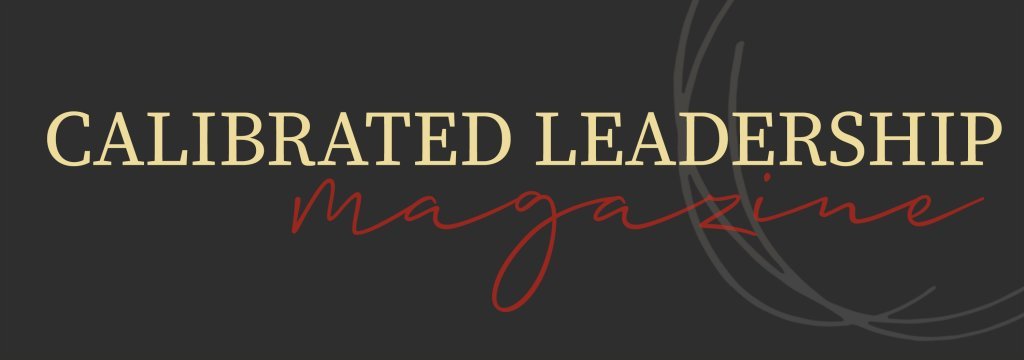
Why Any Business Needs Positioning
- Issue: Fall 2022
- Business
- Written by: Pepita Bos
Over the past 30+ years, I have worked with companies large and small. For a long time as an independent brand and marketing change process consultant, and later as a strategic consultant through my own marketing agency. My clients were mostly service providers across a range of industries. A couple of years ago I focused solely on online course creators. I love what I do because it gives me the opportunity to help knowledge entrepreneurs grow their business. However, one of the most common problems I have encountered during my whole career is bad or no positioning.
One day I was talking to a prospective client. They told me they needed someone to write a great About Us on their website.
I talked to this prospect and looked at their website and told them that in order to write a great About Us, they needed to get their positioning good to go. From things on the website, I could tell that it was not consistent. The client agreed with me and I would hear back from them shortly.
After a week or two of silence, I contacted them and asked them about the status of the project. I received a quick response which was that they had decided to postpone the project.
I was mystified by this response because I thought they understood the concept and purpose of positioning.
They obviously didn´t, because if they had truly understood the concept of positioning, they would have understood that it has to be done first. Not after creating a business name, not after developing a logo, and certainly not after creating a website.
But it is a mistake a lot of business owners make. No positioning, or positioning after the fact. As you can imagine, it takes a lot of work to bend a business positioning back into shape. 😉 It is like putting in water pipes and electricity after the house has been built, painted, and decorated.
What is positioning anyway?
I always work with – my adapted – positioning hierarchy by Roland van Kralingen. This Dutch marketing guru wrote a great (Dutch) book on the topic, named Super Brands.
According to his positioning hierarchy you have to position on three levels:
- On the level of the business in the market.
- The level of the brand.
- The level of (marketing) communication.
The second and the third follow from the positioning at the highest level. In the first level, you determine your business domain, your business model as well as what drives your business.
The business domain is determined by the services or products you provide to specific audiences, to solve their specific needs and problems.
Your market position is determined by how you differentiate your business from your competitors, the choice for specific groups of clients, and which place you choose in the competitive landscape. Differentiation is all about the unique value you offer that sets you apart from the competition and attracts the clients you are targeting.
So positioning is all about making the necessary strategic choices about where you want your business to be. Extremely important, as without clear choices there is no focus and without focus, there can be no success. This goes for large businesses as well as for the solopreneur.
Strategic choices are choices about seeing your business’s identity in relation to the other actors in that market: competition, suppliers, customers, etcetera. Below are some choices you have to make as an entrepreneur:
- What is the purpose of your business? (Other than making money!)
- What do you want to be as a business?
- Which audiences do you want to serve?
- How do you want your audience to see your business?
- How will you distinguish yourself from your competition?
- How will you be relevant to your customers?
- How will you deal with developments in the market?
- Will your abilities and personal values let you be what you want to be?
- And finally, how will those choices influence your positioning on every level, as well as your business model?

Why is positioning important?
With the immense availability of products and services, it is more important than ever to distinguish your business and brand from others. With smarter and more unpredictable customers, who have the world at their social networking fingertips this hasn’t become any easier. The necessity to be consistent through all channels and media, demands a well-thought-out positioning.
This positioning – in my opinion – should be rooted in the entrepreneur’s personal values and competencies held against the opportunities the market offers. Especially if the business is a service or knowledge business, or if the entrepreneur is a solopreneur. For products, it works somewhat differently.
Consistency in my opinion is one of the most important critical factors in a business and brand´s success. More important than authenticity!
Think about consistency for a minute. You are a loyal customer of a business and whenever you go there or order from them, everything is fine and dandy. But one day there is something wrong with the delivery of their product and when you contact customer service the problem is exacerbated by the horrible service – or lack thereof – the support employee provides. What once was a great brand in your opinion, is showing its first cracks in brand consistency. And I am pretty sure everyone can fill an evening complaining about bad customer service.
As such positioning is also important as an internal compass. It determines what you will and won’t offer to the market. It also determines which audiences you will and will not serve. This compass steers on-brand behavior: the way you communicate, and in short, how you do business. In the day-to-day, it is a practical guide on which type of image you will or will not choose for your website, the tone of voice you use in your communication, which freelancers or suppliers to work with, and which kind of behavior is appropriate towards a client. Everything should fit together and make sense to people working for the business as well as people on the outside.
Where do businesses go wrong in positioning?
Very often it is a case of not making any choices. The most common mistake is not choosing which customers to target and claiming that everyone is your customer.
Another common mistake is not making choices as to what it is you will offer as a business. And as a result, keep on adding services or products to the assortment until it makes no sense to a potential client what it is that your business offers. If you started out as a hair salon and you now also offer advice on SEO that makes no sense for people in the audience you target. (True example!)
It can also be a question of not defining your business in the right way. Or in other words, to find the right umbrella that covers what your business does. It is hard to find a commonality between hairdressing and SEO, but if the hair salon would offer massages or any other kind of beauty and wellness services, you could position the business as a place for beauty and wellness. Another direction could be expanding the hair salon with a shop with hair products for professionals.
Let’s illustrate by another example. If you are Shell or any other company selling petrol at gas stations, you can position yourself as a gasoline company. Shell can also position itself as an energy company and as such, they would be able to work on energy innovations, solar energy, wind energy, or simple household batteries even. The chosen definition could make all the difference in how you set up your business and how others see you. Saying you’re a gasoline company and then selling solar panels makes no sense. Saying you are an energy company and selling the same solar panels, makes all the sense in the world.
You may wonder why a definition matters. In my opinion, it has to do with being believable and trustworthy. People like to buy stuff from companies or solopreneurs they know-like-trust. If you claim to be one thing, people will find it odd that you are doing something else. Take for instance the general response people have when they hear that a model will start acting. People have put this person in the model category in their minds and all of a sudden they have to change that. It is confusing.
A last example. We once had a client once who wanted us to make her website. She worked as an independent change manager and did a lot of work for governmental departments. She also taught Pilates and she considered herself a white witch. She wanted all those things on one website. Maybe penny-wise, but positioning foolish. If you were in charge of hiring a change manager at the Dutch department of defense, would you hire someone claiming to be a white witch? Doesn’t mean there is anything wrong with (thinking you are) a white witch, but it will probably hurt the perception of your business and brand.
The Jack-of-all-trades positioning trap
As the white witch example shows there is a positioning trap business owners can fall into. I call it the ‘Jack-of-all-trades’ positioning trap.
In many cases, the multiple streams of income approach creates this “Jack-of-all-trades” gap. Especially if there is no commonality between them.
These multiple businesses may seem necessary from a monetary point of view, but running multiple businesses at the same time is hard because it takes away focus and forces the entrepreneur to divide time and budget over multiple projects. And it could make for an inconsistent brand. Be it that of a change manager, Pilates instructor, or white witch. The result is that you become unbelievable at all of them.
A model to structure your thoughts
The process of positioning is an exercise in exploration, analysis, thinking, reflection, and making decisions. Of course, it is hard to free up time for a good think. ‘Doing’ seems to be valued more than ‘thinking’. However, a frequent time-out for some reflection is something that every business owner should plan in his schedule. Take a breather from doing, to see if you are on track and make changes if you aren’t.
I like working with models. Some may think it is too theoretical, but it helps me structure my thoughts.
This model is by Dutch brand guru Roland van Kralingen1. The model has been around for a while but it still holds true. Over the years I have adapted it slightly (the terms, not the basic concept of the model) to fit the audience.

If you prefer the Purpose-Way-Impact method instead of working with a Mission & Vision, please feel free to do so.
Working through the hierarchy is an iterative process. Just start filling in the elements. Do the top level, before you go down to the next. But feel free to go back and forth between the elements and adjust where you see fit.
Where you have to leave them blank, you should have a good think. When you have filled them all, see if they fit together. Check for the consistency within the level, but also between the levels. Think of the examples given before. When in doubt, ask for help. Ask your most direct and honest business buddy!
1Source: R. van Kralingen, Superbrands, Merken en Markten van Morgen, Samsom, Deventer, The Netherlands, 1999, p. 205.

Founder of Fluks, a Knowledge Commerce Agency


